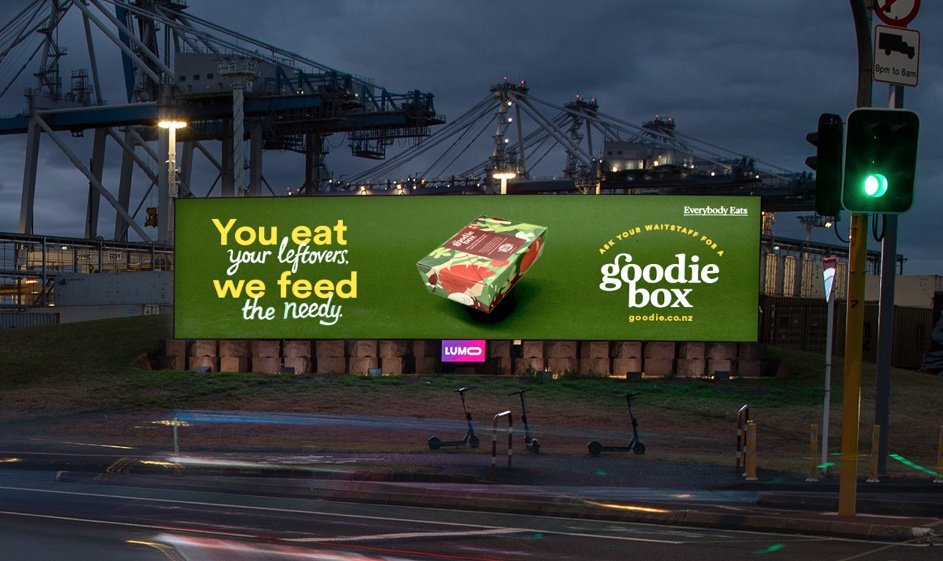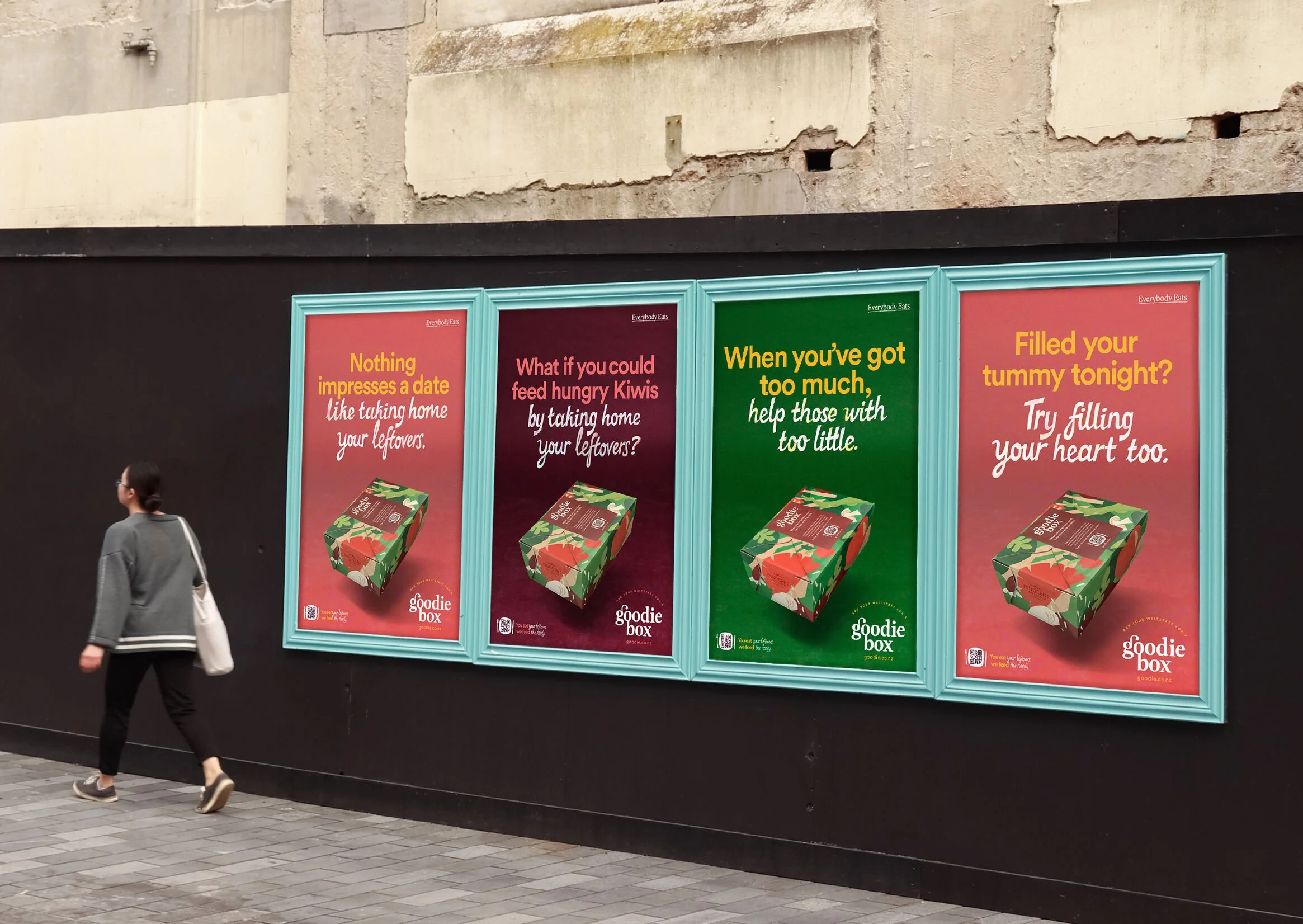







I partnered closely with the Creative Director and the web-development team to conceive, model and animate all 3D assets for Goodie Box—a pay-it-forward leftovers initiative brought to life across print, social, OOH and an interactive WebGL site. My brief was to translate the campaign’s sustainable, papercraft aesthetic into motion: folded-card food icons that unfold in 3-space, guiding diners from “take-home” to “give-back.”
Researched biodegradable materials and papercraft forms; created a digital style-guide marrying recycled-card textures with vibrant, restaurant-friendly colourways.
Modelled & rigged all the low-poly “folded-card” food items in Cinema 4D; built procedural textures to mimic recycled stock; optimised meshes for WebGL and print.
Collaborated with Three.js developers; exported GLB scenes with baked lighting; authored motion sequences that illustrate the $5 QR-code donation flow.
Description:
A bitter irony:
17% of Kiwis don’t finish restaurant meals. Even though most of us want to take leftover food home, we don’t, for fear of judgment. – Love food Hate Waste 2020.
As a result, tonnes of good food needlessly goes to landfill every year – a daily frustration of chefs nationwide.
All the while, 1/5 Kiwis today live in food poverty.
Creating value from what was destined for landfill:
We needed to talk to diners, and in their moment of too much food, get them to think about those with too little.
To achieve that, we needed two things. A way to infiltrate the dining experience, and real discussion around the issue.
Concept:
Goodie Box
A doggy bag, that lets you help those with nothing. So you can feel good to take leftovers home.
Simply scan the QR-code to give $5 (or more), and a hungry Kiwi gets a fresh meal at Everybody Eats (a charity restaurant chain).
We launched the project by creating discussion in the media about how we need to change our thinking around leftovers. Online, influencers lead by example, and on the way to dinner, we reminded diners with strategic OOH.
Execution and Evaluation:
The name:
Needed to convey goodness – nod to no-waste, feeding of the hungry, quality food, the sense of being a goodie/foodie.
The outputs:
• Box design and production
• Website
• Campaign – OOH, digi-display and social
The design needed to:
1. Be sustainable ¬– and look it, in keeping with the no-waste theme
2. Be distinctive – standing out in often dimly lit spaces, infiltrate the dining experience
3. Not cuisine-specific – we needed to partner with many restaurants
4. Appear to be an object of value, giving value to food inside
The box:
Made from plants, the recycled-card outer, and PLA inner allows the Goodie box to be recycled or composted.
The papercraft aesthetic – inspired by the box itself:
• The food shapes were hand-cut from paper, scanned and refined digitally, creating a pattern related to food but wasn’t food – and didn’t compete with restaurant menus/branding. Overlaid on brown paper, sympathetic to the wider recycling story, crafted to ensure colour stand-out in busy, dimly lit spaces
• Hand-crafted, hand-painted poster typography
• 3D food built like folded card and animated to tell the pay-it-forward story on the website
Results:
54 of NZ’s top, high value, restaurants on board since April 19 – all buying the boxes, buying meals, and promoting Everybody Eats at the table. An ongoing revenue stream from what was to be landfill.
100+ restaurants projected by 2022.
20,000 leftover meals have so far been taken home to feed hungry bellies.
90% of diners now take any substantial leftovers in Goodie Box restaurants according to evidence.
Saving tonnes of landfill every year.
Helping feed hundreds of Kiwis every day.
Thanks to the instant success of the Goodie Box, the initiative is looking to be rolled out in the UK in 2022.